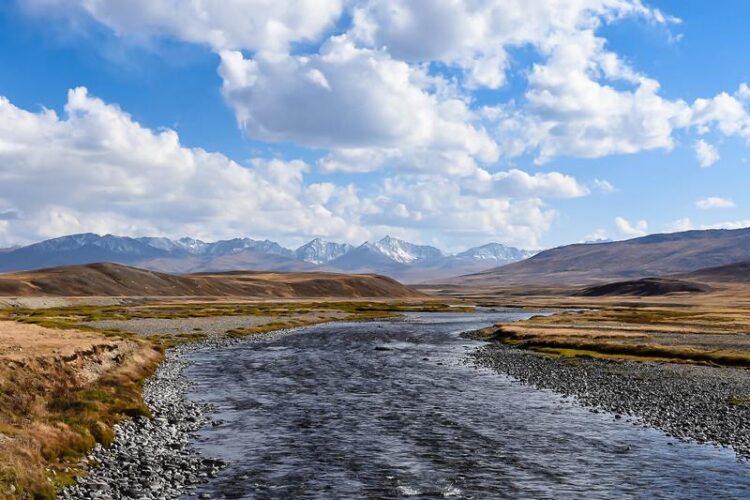Worldwide assessment of protected areas

Pakistan’s Deosai National Park
Credit: C. Hof / TUM
Free for use in reporting on TUM, with the copyright noted
Protected areas are among the most effective tools for preserving biodiversity. However, new protected areas are often created without considering existing ones. This can lead to an overrepresentation of the biophysical characteristics, such as temperature or topography, that define a certain area. A research group at the Technical University of Munich (TUM) has now assessed a global analysis of the scope of protection of various biophysical conditions.
Protected areas are important for maintaining populations of various species. They ensure that many animals and plants do not lose their habitat and thus help to protect endangered species and safeguard biodiversity.
The worldwide protected area network is steadily growing in number and extent. “From a conservation standpoint, this is generally a welcome trend. But the uncoordinated expansion of protected areas can result in wasted resources worldwide if care is not taken to protect as many species communities and environmental conditions as possible,” says Dr. Christian Hof, the director of the junior research group “MintBio – Climate change impacts on biological diversity in Bavaria: Multidimensional Integration for better BIOdiversity projections” under the auspices of the Bavarian climate research network bayklif at TUM.
Which conditions in the sea and on land are not adequately protected?
The scientists investigated the extent to which the world’s current network of protected areas, both on land and at sea, are truly representative in terms of biophysical features, such as temperature, precipitation, topography, sea surface temperature and salinity. In other words, which conditions are not sufficiently protected at present and where are they located.
“The planning of protected areas has tended to focus on biodiversity and representative ecosystems,” says Matthias Biber, a doctoral candidate in the MintBio team. Under his leadership, a research team has now studied the combination of biophysical factors on a global scale. This method has so far often been overlooked when planning protected areas and so far no global assessment has considered terrestrial and marine habitats together.
Biophysical gaps in current protected areas
The study shows that protected areas are relatively rare in regions with high temperatures and low precipitation, while the protection of various elevations is evenly distributed. “Our study thus reveals low protection for conditions like those in the Sahara and the Arabian Peninsula,” says Matthias Biber.
In the marine realm, by contrast, areas with medium and high sea surface salinity and the deep sea were found to be underrepresented, while protection for different surface temperature conditions was evenly distributed. “Especially in the deep sea, we still know much too little about biodiversity. Because our study shows a lack of protection of this habitat, that means that a largely unexplored area could be lost through damage from human activity or exploitation,” says Biber.
Insights to aid future planning of protected areas
“The planning and structure of networks of protected areas is vitally important to the preservation of biodiversity. Because we do not even know in some cases which species remain undiscovered in areas such as the deep sea or the desert and how these and other species will respond to climate change, it is important not to limit protection to a few areas with high biodiversity. Instead we should create a network of protected areas with maximum resilience that will offer refuge for all possible environmental conditions and thus all potential habitats in the future,” explains Hof.
Consequently, the study can provide useful insights for researchers, practitioners and political actors in order to create a more comprehensive global protected area network.
Wissenschaftliche Ansprechpartner:
Dr. Christian Hof
Technical University of Munich
Hans-Carl-von-Carlowitz-Platz 2
85350 Freising
Phone: +49.8161 71-2489
christian.hof(at)tum.de
Originalpublikation:
Matthias F. Biber, Alke Voskamp, Christian Hof (2021): Representation of the world’s biophysical conditions by the global protected area network. In: Conservation Biology, URL: https://conbio.onlinelibrary.wiley.com/doi/10.1111/cobi.13822
Weitere Informationen:
https://www.tum.de/en/about-tum/news/press-releases/details/37154 (Press release)
https://mediatum.ub.tum.de/1639749 (Images)
Media Contact
All latest news from the category: Ecology, The Environment and Conservation
This complex theme deals primarily with interactions between organisms and the environmental factors that impact them, but to a greater extent between individual inanimate environmental factors.
innovations-report offers informative reports and articles on topics such as climate protection, landscape conservation, ecological systems, wildlife and nature parks and ecosystem efficiency and balance.
Newest articles

Superradiant atoms could push the boundaries of how precisely time can be measured
Superradiant atoms can help us measure time more precisely than ever. In a new study, researchers from the University of Copenhagen present a new method for measuring the time interval,…

Ion thermoelectric conversion devices for near room temperature
The electrode sheet of the thermoelectric device consists of ionic hydrogel, which is sandwiched between the electrodes to form, and the Prussian blue on the electrode undergoes a redox reaction…

Zap Energy achieves 37-million-degree temperatures in a compact device
New publication reports record electron temperatures for a small-scale, sheared-flow-stabilized Z-pinch fusion device. In the nine decades since humans first produced fusion reactions, only a few fusion technologies have demonstrated…





















